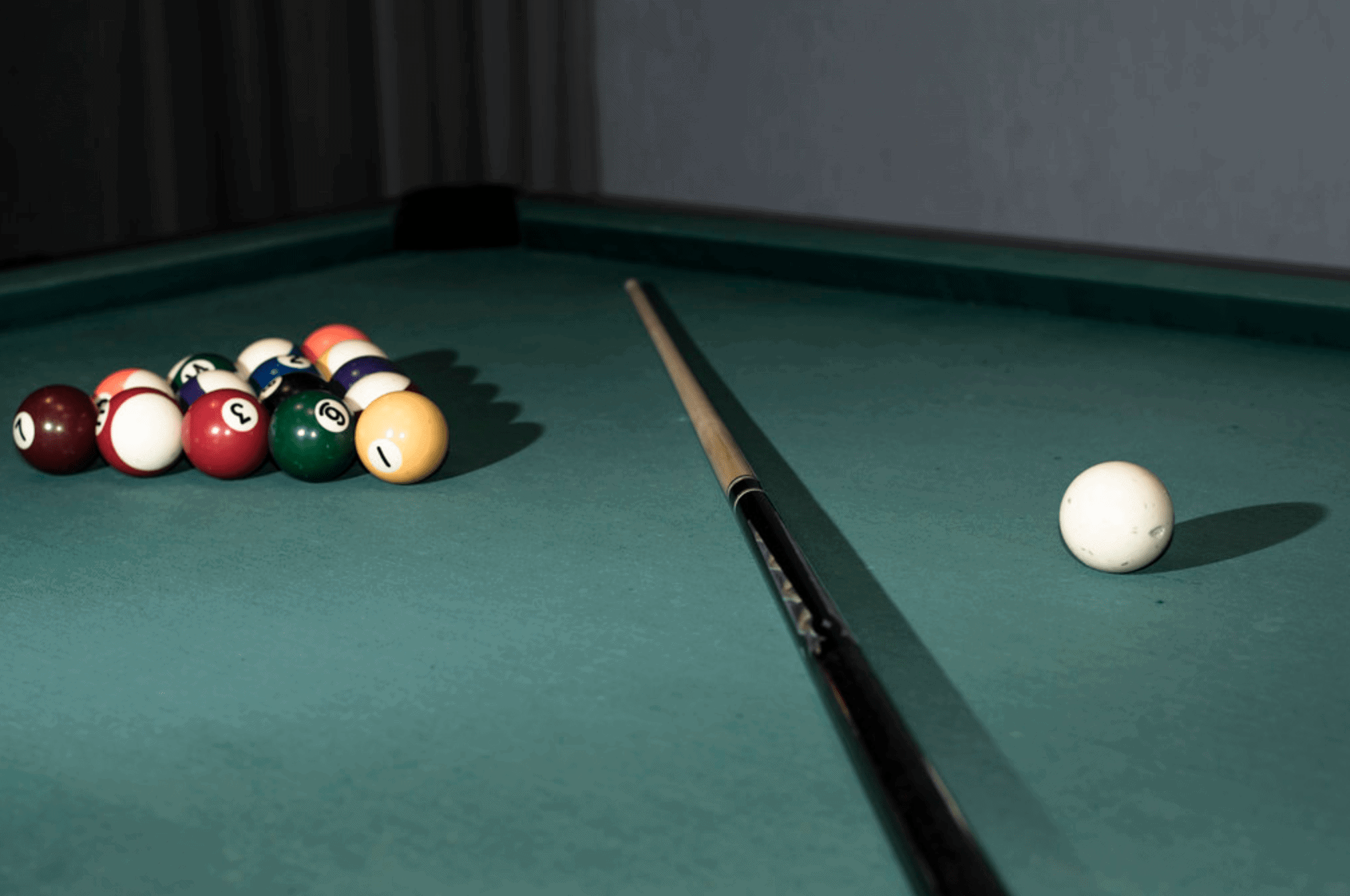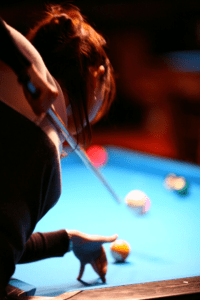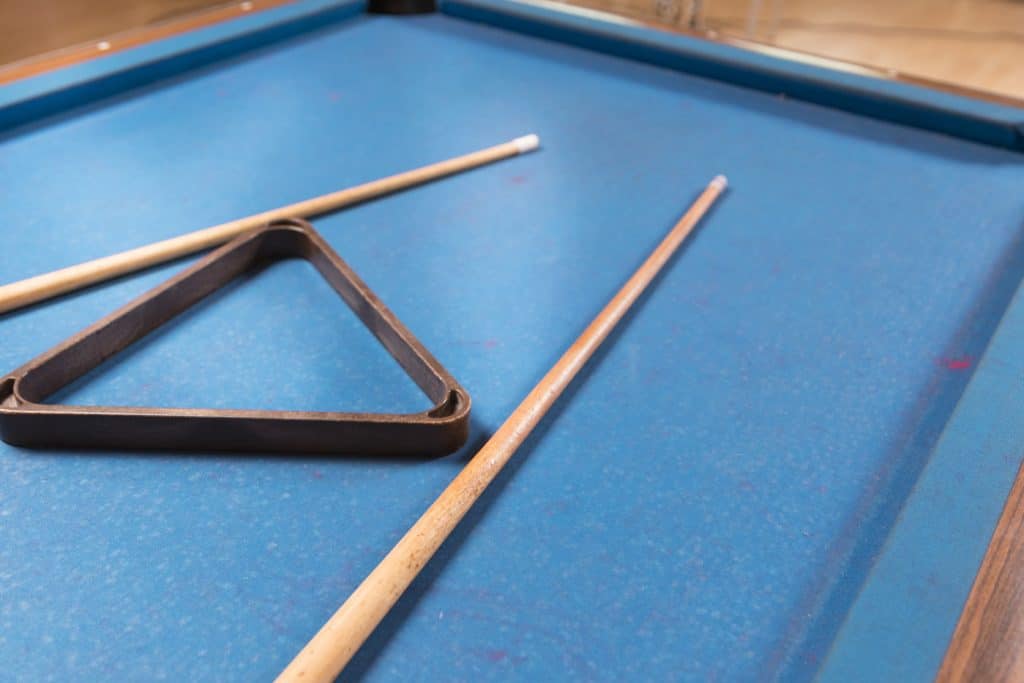
Looking for the best jump cue to wow your opponents?
Today, we have 5 jump cues to offer to you! To help you choose, we’ll go through their features and specs, covering everything that matters for making jumps.
On top of that, we have prepared a buyer’s guide to let you better understand our reviews and jump cues in general.
In this guide, you can also find jump cues from different price points.
Let’s get started without further ado!
TL;DR – These are the Best Jump Cues 2021:
Up first on our list, we have the Predator Air 2 jump cue.
The Predator Air 2 cue offers a lightweight construction – though Predator doesn’t seem to indicate the exact weight anywhere, Air 2 weighs about 10 ounces.
Thanks to the 3-piece construction, you may adjust the weight and length of the cue as well to adapt it to short- or long-distance jump shots. The Uni-Loc quick-release joint makes adding and removing pieces easy.
For even more flexibility, Air 2 features a weight system that lets you adjust the cue’s weight in 0.25-ounce increments. The weight system allows you to add up to 3.5 ounces of additional weight to the cue. The weight bolts are sold separately though, so keep that in mind.
Air 2 also features a reinforced design to deliver greater power and accuracy for jump shots. The shaft and collar are enhanced with carbon fiber for added strength without adding much weight.
Pros:
- Accurate and powerful jumps
Cons:
- Seriously, I haven’t find anything that I didn’t like
The Pechauer jump cue is a relatively inexpensive cue and is a good choice if you need nothing fancy.
This jump cue features a 2-piece construction, so it doesn’t offer the same level of flexibility as the Predator Air 2 jump cue. However, this cue seems to be lighter than Predator Air 2 when the latter is fully assembled. The Pechauer cue weighs about 9 ounces, which is pretty light for a jump cue.
This cue features a 1-piece phenolic tip and ferrule as well to improve power transfer to the ball.
We also like the fairly traditional design of this cue. It looks super-simple and lacks the flashy colors of some other jump cues on the list, which may make the cue unappealing to some buyers.
Pros:
- Relatively inexpensive.
- Very light.
Cons:
- Its simple design may not be for everyone
The Lucasi Air Hog 2 jump cue is an excellent option if you didn’t quite like the Predator Air 2 cue. At the basics, the two jump cues are very similar, but Air Hog 2 has a few unique goodies to offer as well.
The Total Sweet Spot Construction in Air Hog 2 extends the sweet spot across the entire length of the shaft, contributing to energy transfer to the ball. The bakelite tip has an enlarged sweet spot as well, reducing spin and providing better control of the ball.
The carbon fiber ferrule and joint collar improve power transfer to the ball as well.
The wrap of Air Hog 2 also features the X-Shox dampening system. This system consists of shock-absorbing memory foam that is advertised to reduce vibration by 27% and make the cue easier on the arms.
The grip’s intricate texture improves traction as well, providing better control of the cue.
Although all these features greatly contribute to the performance of Air Hog 2, its highlight is actually the 3-piece construction. You may make the cue lighter by removing the third section, thus reducing total cue weight from 12.5 to 8.5 ounces. In its heavier configuration, Air Hog 2 may be used as a break cue.
Air Hog 2 also features an adjustable weight bolt system – like in Predator Air 2. The weight system supports up to 3.5 ounces of extra weight.
Compared to other jump cues on the list, Lucasi Air Hog 2 is quite expensive. However, for what you are getting, it’s certainly worth the money, and its flexibility in adjustment is excellent as well.
Pros:
- 3-piece construction with weight adjustments
- Excellent power transfer
Cons:
- It is harder to use than the less expensive Predator Air 2 jump cue
The Purex HXT-P1 jump cue offers the best adjustability among all cues on this list. Thanks to its 4-piece construction, you could use HXT-P1 for short and long jumps, as well as breaks.
This particular cue is a jump/break cue, so you can use it for break shots as well. And honestly, it did really well! It can give you powerful breaks and accurate jump shots.
HXT-P1 is also a rather heavy cue – it is available in weights from 18.5 to 21 ounces in half-ounce increments. This should make it great for breaking, while the adjustable construction will allow you to regulate the amount of force you put into the ball and the amount of control you have.
To ensure excellent power transfer to the ball, HXT-P1 features the XLG Quad Face tip with an extended sweet spot. The addition of carbon fiber to the cue’s key impact points also significantly stiffens the cue for maximum energy transfer.
We also like the multi-zone grip wrap on HXT-P1. Zone 1 – as Purex calls it – features super traction to prevent inconsistent hand torque. Zone 2 offers a smoother contour for a lighter cue feel. And finally, Zone 3 features sweat channels to increase comfort and help you maintain grip.
Purex also backs this jump cue with a lifetime warranty, which even covers warpage. So although HXT-P1 is a rather expensive jump cue, Purex does deliver plenty of value for the money.
Pros:
- Heavy 4-piece construction
- Great performance on both jump and break shots
Cons:
- Pricey
Finally, we have the Rage Heavy Hitter jump break cue. This is a very wallet-friendly cue, so it’s great if your budget is limited. Aside from that, the Rage cue features a much heavier construction than previous cues on this list.
This jump break cue weighs a whopping 25 ounces, so it should be an excellent pick particularly for breaking. The 3-piece construction allows you to somewhat adjust the weight down, but it remains a fairly heavy cue.
Note that due to its heaviness, the Rage jump break cue may work better for breaking than jumping. With lighter cues, you get better control and speed, so the heavy weight of this cue may make it less controllable and slower.
As a cheap cue, the Rage jump break cue also perhaps isn’t the best choice if you are going to play often. You could expect a shorter lifetime from this cue than from more expensive cues.
Pros:
- Very inexpensive
- Heavy 3-piece construction – excellent if you want a jump & break cue
Cons:
- Lacks explosiveness compared to other higher end jump cues
How to Choose a Jump Cue

Now, let’s try to understand how to choose the best dedicated jump cue. In our buyer’s guide, we will specifically talk about features & specs that are important for jump cues. We’ll avoid features that pertain to cues in general – you should research those yourself to better understand cues as a whole.
Tip
Tips in jump cues are typically made of either phenolic resin or bakelite. Both these materials make for super-hard cue tips that have excellent energy transfer. With that said, bakelite tends to hold chalk better, which might be a huge advantage for some people.
Weight
Weight is one of the most important specs to pay attention to when shopping for a jump cue.
As you probably know, jump cues are lighter and shorter than standard cues. Jump cues typically go from 5 to 10 ounces, while other cue types range from 15 to 25 ounces.
The purpose of the lighter weight is to increase the speed of the cue and also make it more controllable. This is to reduce the tip contact time with the ball. If the tip contact time with the ball is too long, the ball will interact too much with the table surface and won’t jump as well.
Now, how light should your jump cue be? This depends on personal preference. In theory, a lighter cue will be faster and provide you with more control, allowing you to reduce tip contact time. However, a cue that is too light may also reduce ball jump distance.
With that, you will have to find the right cue weight for your skill level and preferences via trial and error. But if you don’t want to waste time and money, then you could get yourself a jump cue with adjustable weight.
Jump cues whose weight can be adjusted are excellent for more or less serious players. Besides, not only can adjustable cues better suit your preferences, but they can also be adapted to various pool situations. Plus, heavier jump cues might also be used for breaking.

Length
Jump cues are typically 40-48 inches in length, while other cue types tend to be about 58 inches long. Jump cues are much shorter than standard cues because they need to be lighter, and the best way to reduce weight in cues is to make them shorter.
Since length and weight are connected with each other, length is generally a matter of preference, and weight should be considered more carefully. However, your cue should be sized right for you – you should be able to grip it comfortably without touching the bottom or without placing the hand too far up the cue.
Construction
Jump cues usually have 3- or 4-piece carbon fiber constructions, though simpler and lower-end jump cues may consist of 2 pieces.
The purpose of 3- or 4-piece constructions is to make jump cues more flexible in adjustment. By removing one or more extension pieces, you may adjust the weight and length of the cue and with it the amount of speed and force that the cue exerts on the ball.
It’s a really good idea to go for a cue that is at least 3-piece. 4-piece cues are going to be even better since they will provide you with more configuration options.
Aside from adjustability, what’s also nice about multi-piece cues is that they are more compact when completely disassembled. This can be super-useful for travel since the cue won’t occupy much space.
Joint mechanism
Consider the joint mechanism as well.
Most modern jump cues have quick-release joints – usually the Uni-Loc system – that allow you to remove or add cue extensions without having to screw or unscrew anything. However, there also is the radial joint mechanism, which requires screwing/unscrewing but is generally considered more reliable and sturdier.
Unless you are really worried about stability and reliability, cues with the Uni-Loc system should be fine. This system has shown great performance and is used by many cue manufacturers out there.

Price
Lastly, consider the price of the cue.
Jump cues are typically more expensive than standard cues – expect to pay from $80-$100 to $300 and more for a jump cue.
If you aren’t super-competitive and need nothing fancy, then you could stick to budget cues costing around $80-$100. For better quality and performance, you may try $160-$180 cues – these offer the best value for the buck. And for top-of-the-line jumps, the pricier, the better.
Dedicated Jump Cues VS Jump/Break Cues
If you are wondering how dedicated jump cues are different from jump/break cues, then the answer is weight and length.
Jump cues typically weigh 5 to 10 ounces to maximize control and speed, while break cues are 15-25 ounces to maximize hitting power. As for length, jump cues are 40-48 inches, while break cues reach 58 inches.
There are also many similarities between jump and break cues – both are optimized for power and energy transfer. This is why you may use jump cues as break cues and vice versa. Though for the best results, you would use a lighter cue for jumps and a heavier cue for breaking.
Conclusion
All in all, remember that a good jump cue has great power transfer, is short & light, and ideally offers some weight adjustment.
Not sure which jump cue to choose? We recommend the Predator Air 2 Jump Cue – it offers great weight adjustment, allowing you to fine-tune your jumps. Easy to use and pretty explosive. But if you want to avoid paying a higher price tag, The Purex HXT-P1 might be your best bet.






Leave a Comment